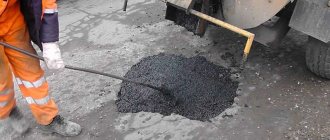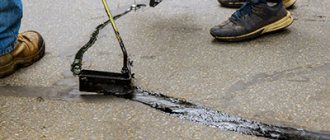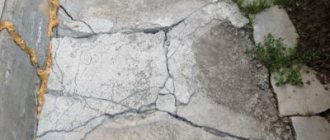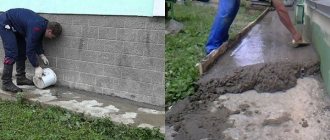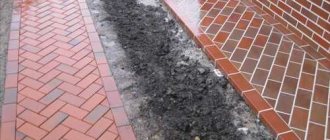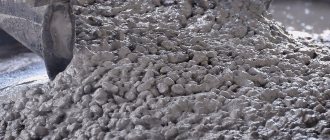Pothole repair is an important service. Every day, roads bear heavy loads and are influenced by the environment. They begin to lose their properties and collapse over time. The reason for all this is the increase in loads from cars on the asphalt surface, which exceeds the norm. The appearance of cracks and holes is a consequence of improper use of the road.
The condition of roads is also affected by the climate factor. Hydrological features of the territory, as well as the location of underground and groundwater. Each of these nuances has its own impact on the quality and durability of the road surface. Pothole repairs of roads in Moscow can be carried out without blocking vehicle traffic. The importance of maintaining roads in excellent condition cannot be overestimated, because road safety depends on it.
Popular service - pothole repair in Moscow
Pothole repair is the most common type of road repair; it is one of the types of road repairs by filling holes and other defects using asphalt concrete mixtures. This type of road repair makes it possible to eliminate a significant part of the damage on the road, not exceeding 25 square meters. meters. It is carried out when major repairs of the road surface are impossible for some reason. It is for this method of repair that motorists often scold road workers, considering it ineffective.
One of the main advantages of pothole repair is the ability to eliminate damage to the smallest area of the road. Often in this situation, a method such as laying a hot version of asphalt concrete mixture is used. The quality of such repairs directly depends on adherence to its technology, which, by the way, is no different from that used in road construction. The composition of the mixture for pothole repair is selected individually for each area, which ensures high quality and strength.
Methods for patching asphalt
Asphalt has a very wide range of applications. They cover both high-traffic highways and private yards. This means that there are different methods of pothole repair: for each task there is one.
They are selected based on the following criteria:
- Weather conditions (air temperature, precipitation, humidity)
- Complexity and cost of repair work
- The need to attract specialized equipment
- Quality and durability of the patch
- Possibility to immediately open traffic on the repaired area
For example, to repair a federal highway, it is necessary to choose repair methods that will ensure the most reliable result. Because a low-quality patch simply will not withstand high loads and will quickly collapse. But on the local area, where there is no constant flow of cars, the money factor comes to the fore.
You can repair holes:
- Rubble
- Cutting asphalt (asphalt chips)
- Recycling method
- Cold asphalt
- Hot asphalt
- Cast asphalt
- Jet-injection method
Let's look at each of them in a little more detail.
Repairing holes with crushed stone
In this case, the pothole is simply filled with fine gravel, which is then compacted. The main advantage of this method is the low cost of work. Moreover, sometimes crushed stone can be replaced with even cheaper materials - for example, broken brick or concrete.
This type of repair has a number of disadvantages:
- The crushed stone grains are not interconnected and are easily carried out of the pit by car wheels
- Water accumulates in the pit, which, when frozen, expands and puts pressure on the surrounding coating, destroying it
- The crushed stone backfill has an uneven surface: it is inconvenient to drive and walk on it
This method can hardly be called a full-fledged repair. It does nothing to prevent further destruction of the asphalt. Crushed stone is used only as a temporary measure. This is, for example, if weather conditions do not allow for quality asphalt laying, but the hole needs to be fixed urgently so as not to create a danger on the road.
Repairing potholes using asphalt cuttings (asphalt chips)
Cuttings are old road surfaces removed during repair work and crushed into small grains. It differs from ordinary crushed stone in that it already contains all the components of asphalt concrete: crushed stone, sand, bitumen binder and mineral powder. But the material is sold at a price 3-4 times less than a new mixture from the factory.
The repair method is similar to that described above: the crumbs are poured into the hole and compacted. The difference is that due to the presence of bitumen, the material melts and sets in hot weather. It turns out to be a real patch. But its quality also leaves much to be desired. After all, asphalt cuttings are a secondary material that does not pass quality checks. It is often obtained from already destroyed asphalt.
This method is suitable for holes on sidewalks, pedestrian and garden paths, driveways and roads with low traffic. But on highways it is not used at all, and on ordinary city roads - only as a temporary measure.
Recycling method
In this case, asphalt chips are also used to fill the hole. It is obtained by cold milling - that is, cutting off the coating without heating.
The material is then loaded into a portable recycler. This is a mixing drum equipped with a burner. In it, old asphalt is melted and mixed until it becomes a homogeneous mass. If necessary, bitumen, crushed stone or sand are added to it. The resulting mixture is similar in properties to hot asphalt.
The cost of repairs is very low, and the procedure itself is waste-free. After all, to fill the hole, the old coating itself is used with minimal additions of new material.
But to carry out such work, expensive equipment is required: cutters, recyclers. So this method is used only by road services and construction companies with their own fleet of equipment.
Repairing potholes with cold asphalt
Cold asphalt is a ready-made asphalt concrete mixture (ABC), which includes fine crushed stone or sand and a liquid binder: bitumen emulsion or regular bitumen, liquefied using solvents (kerosene, gasoline and others).
Cold asphalt remains plastic even at low temperatures (down to -5-10°C). It can be laid in late autumn and winter, with high humidity and precipitation. And traffic on the repaired area can be opened immediately, without waiting for the patch to completely dry and harden.
But the quality indicators of cold asphalt are very modest. It has low strength and high water saturation - that is, it absorbs a lot of water. With medium and high transport loads, it lasts no more than 1-2 years.
But this material is well suited for patching small holes on sidewalks, playgrounds and courtyards, where the load on the coating is small.
Repairing potholes with hot asphalt
Hot asphalt is a mixture of crushed stone or sand with viscous bitumen, which is laid at a temperature of at least 100°C. This is the most versatile material - it is used both in the construction and repair of roads.
Hot ABS patches are strong and durable. And in terms of their quality characteristics, they are as close as possible to the coating as a whole. This means that weak points will not appear at the junctions between old and new material.
But when working with hot asphalt, you need to follow a number of rules:
- Repairs are carried out at air temperatures not lower than -5°C, in dry weather
- Do not lay asphalt on a dirty or wet base.
- The mixture must not be allowed to cool to a temperature below 90-100°C when laying
- It is undesirable to open passenger transport traffic on the site earlier than 8 hours after the completion of repairs (and for freight transport the period is even longer - 1-2 days)
The last point is due to the fact that heated asphalt is plastic and can be deformed by car wheels.
Hot asphalt repair is in demand on roads because it provides the best results for relatively little money. But for private areas this option is not always suitable. This material is produced in large quantities - from 1-2 tons. If the area of damage is small, then you do not need such volumes. But you won’t be able to store the excess as a reserve - after cooling, the mixture becomes useless.
Repairing potholes with cast asphalt
Hot and cold ABS are bulk materials. But cast asphalt is a plastic mass whose consistency is more like mastic. This is ensured by the high content of bitumen and mineral powder (up to 30%) in its composition.
Due to this, the cast mixture is easily laid and compacted under its own weight, without requiring the use of rollers. And since it heats up to very high temperatures (up to 260°C), it can be laid even at sub-zero temperatures (down to -10°C). A patch made from this material is completely waterproof, which is also a big plus.
But due to the high consumption of bitumen and mineral powder, cast asphalt is expensive. And for its production and transportation you need special equipment. Therefore, its scope of application is limited. Such mixtures are used for repairing highways and expressways, as well as covering bridges and overpasses. But they are not hired for private work.
Jet-injection method
This method is actively used in the USA and European countries (where it is called spray patching), but in Russia it is still gaining popularity.
To fill potholes, special machines are used - repairers, equipped with containers and a system for feeding material through a sleeve. Using the installation, the pit is purged with air and cleaned. Then it is filled with a binder emulsion and covered with crushed stone treated with bitumen. Since the material is supplied under pressure, it is immediately compacted and forms a durable patch.
The main advantages of this method are its efficiency and the ability to carry out repairs at temperatures down to -15°C, that is, almost all year round. And since all the work is carried out by one machine, there is no need to block traffic on the road.
But it also has limitations. Firstly, only shallow holes and potholes can be patched in this way. Secondly, it is not suitable for roads with high loads: with traffic volumes exceeding 1000 vehicles per hour or intended for the movement of heavy freight vehicles. But it is not practical to use it to repair individual potholes on private property.
Now you have an idea of all the main methods of local asphalt repair.
The cost of patching repairs per m2 in Moscow and the Moscow region
| Job title | Thickness, cm. | Unit Change | Price, rub. |
| Pothole repair - fine-grained asphalt concrete | 4-5 | m2 | 400 |
| Pothole repair - sandy asphalt concrete | 4-5 | m2 | 460 |
| Pothole repair - coarse asphalt concrete | 4-5 | m2 | 500 |
| Pothole repair - crushed stone-mastic asphalt concrete | 4-5 | m2 | 600 |
To view the prices for all services, go to the section Prices for all services
An inexpensive and quick way to fill potholes on the road.
In the spring, after the snow melts, residents of Russia are faced with a significant number of potholes on access roads to small settlements and villages, formed due to poor-quality road foundations or due to the lack of proper drainage of water from the road surface. And many people ask the question: “How to carry out pothole repairs on the road yourself?” or “How to fix holes on the roads on your own?” Until local authorities decide what needs to be done, more than a dozen tires and rims will turn into garbage.
Hole in the asphalt.
Damage to wheels due to potholes on the roads
a common sight on our roads
Very often, along the entire length of the road, only a few such holes are formed, in the most problematic places. Delivering such a small amount of asphalt for pothole repair does not make any economic sense. And no one at the plant will ship such a quantity of asphalt. Ordering road machinery or equipment is quite an expensive undertaking, as is contacting a specialized road company. Often, for normal driving on local roads, it is enough to fill only 2-3 holes.
Solving the problem with potholes on the road
In view of this, we have developed a method for pothole repair of roads, which we have repeatedly tested, is extremely effective and very cheap. The great advantage of this method is the availability of “equipment”. A shovel, a couple of bricks and a broom are all the necessary equipment!))
The materials are also simple: (based on 1 m2 of pit 10 cm deep):
- Bitumen mastic 1 bucket (20 liters) - can be bought at any construction market. Average cost 300-350 rubles;
- Fine crushed limestone, fraction 5-20 or 20-40mm. or less in the amount of 1 wheelbarrow;
- Sand ½ wheelbarrow.
So, let's move on to the description of this method of filling potholes on the roads:
- First, you should clean the hole from water, dirt and debris - an ordinary broom will help you!));
- Then fill the hole with fine-grained limestone crushed stone to the level of the asphalt surface. Please note that fine crushed limestone is best suited. Crushed gravel or granite is not suitable for this procedure! Also, you should not use crushed concrete, broken bricks, etc. for this...
- After filling with crushed stone, it should be compacted using any available means. For example, you can drive a car along it 6-7 times;
Warming up the bitumen mastic
- After compaction, it is necessary to build a stand from 2 blocks or bricks for a metal bucket of bitumen mastic and build a fire under the bucket;
- The mastic must be heated over a fire for about 20-30 minutes, stirring occasionally with a stick. After 20-30 minutes, the mastic should acquire a liquid consistency;
- After heating the mastic, it must be poured evenly onto the crushed stone so that there are no empty spaces. Particular attention should be paid to the edges of the junction with the old asphalt - these places should be poured especially carefully;
pour bitumen mastic onto crushed stone
pour bitumen mastic onto crushed stone
Pour bitumen mastic onto the crushed stone so that there are no empty spaces
- Then you need to pour sand in a layer of 2-3 cm onto the resulting “black” surface. The sand should cover the entire surface of our former pit so that the mastic is not visible underneath it. This is done so that passing cars press the sand mixed with mastic into the voids between the fractions of crushed stone and at the same time do not dirty the wheels with hot bitumen mastic. There is no point in sparing the sand... all the excess will be carried away very quickly by cars and wind.
Pour off the sand
- After filling with sand, you can immediately safely start driving cars along the former pit. There is nothing wrong with this; on the contrary, it helps to compact our patch better. The weight of the cars mixes the sand with the bitumen and seeps between the crushed stone, which promotes better adhesion of the patch. This point is extremely important and it is its implementation that will ensure the integrity of the patch for many years.
- In the photo below you see a patch made using the method described above, which is already 2 years old. Please note that the patch costs like a stone. The asphalt around it has long since cracked, but the patch looks like new. So this method turns out to be extremely effective and cheap in the long term. And most importantly, such work can be performed by anyone, even without such experience.
Old patch
By the way, in addition to holes, we also recommend pouring hot bitumen mastic with sand onto cracks in the asphalt. The mastic will glue them together and prevent water from getting inside the cracks. Since it is the water that gets into the cracks, as a result of a change in its state of aggregation, that destroys the roads.
If you need advice on road and related construction, please contact us. We know everything about road construction and the most profitable solutions in this area. We work in Moscow and the Moscow region. We approach solving problems with an emphasis on the concept of “price-quality”.
Preparing the site for pothole repair
The main omission of unscrupulous workers, who restore the same places year after year, is to repair only the top layer of the damaged area, while the patching technology involves restoring the underlying layer as well.
To do this, you must first separate the damaged area from the undamaged coating. It is possible to cut out the required square exactly only with the help of a road milling machine. Only when using this tool will the walls of the square remain smooth and have equal depth. Mounted cutters located on the boom of a mini-loader or in the rear overhang are considered more comfortable in this regard. After the defective sector has been cleaned of crumbs and dust, its bottom and edges are treated with heated bitumen or liquid bitumen emulsion, and only after that the asphalt concrete mixture is poured.
Compacting the road surface
Most utilities are equipped with massive rollers weighing over 8 tons. This technique is completely unsuitable for making pothole repairs on asphalt roads. You won't tear down a wall to replace a window. Therefore, it is most advisable to use manual vibration plates. This practice has only been used for the last ten years. Previously, vibrating or sidewalk rollers were used for the same purposes, which was also too “large-scale” for this type of work. This “trampling” technique does not require any special skills. For pothole repairs, vibrating plates weighing up to 150 kg are usually used. The quality of their work directly depends on the engine power. The more powerful it is, the faster and more reliably the patch will “fit” into the hole.
Read on topic: Rutting on the road
After this, the patch is usually filled with bitumen on top. On the one hand, this is considered a relic of the past; if the patch is ideally adjusted to the level of the rest of the road surface, then there is no need for such alignment and delineation of its boundaries. But with a sharp change in temperature, if we are talking about using a hot asphalt concrete mixture, the old asphalt may crack after some time. And here the point is not at all that it was “poured incorrectly”, this is a common side effect, the reaction of the material to a change in temperature. Bitumen applied over the patch will help prevent such cracks from forming and will extend the life of the asphalt.
Advice: based on the results of pothole repairs, you can easily check the utility service for lice. If the patches went on perfectly, but the rest of the road surface began to deteriorate rapidly, then there is a clear desire to “save” on a complete road repair. Accordingly, at least 12-15%, which are declared according to GOST, are damaged.
Recommendations for use
Before using road mastic, it is necessary to determine the damage class of the coating. These include temperature, reflection, butt and force profile cracks. In addition, this may be a complex destruction of the upper layers of asphalt. To eliminate it, you will need to use cards with emulsion, cold asphalt, or completely replace the coating. In cases where the width of the crack exceeds the depth, it would be more rational to use a cast asphalt concrete mixture rather than mastic.
When filling cracks with road mastic, the depth of the damage chamber should be equal to the width. Before sealing, it is necessary to process the edges for chips, gouges, and also check for lateral damage. During pouring, it is recommended to spill the material beyond the crack boundary. This provides additional insulation.
Technological process of pothole repair
Such repairs are quite simple and consist of several stages: marking the area, cutting down and cleaning the hole, paving potholes.
Preparatory work:
- First, the areas of damage are marked; for this purpose, a schematic map is drawn up for repairing the holes. The areas of the damaged section of the road where asphalt replacement is needed are identified with rectangular figures.
- Then the marked rectangles are cut down and cleaned to a depth of 15 cm using jackhammers and seam cutters. In cases where the damage is extensive, equipment designed for these purposes is used.
- After cutting down, the quality of laying the coating is checked; perhaps the main cause of destruction is a poorly laid base or its complete absence. When the base is there, just add crushed stone and compact it. If there is no “cushion” of crushed stone, the pothole is cleaned of dirt and the base is made anew. Before filling potholes, their edges are treated with bitumen to better bond the old asphalt layer to the new one. If a large area of the road is damaged, cutting and dismantling is carried out using an excavator.
